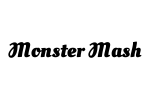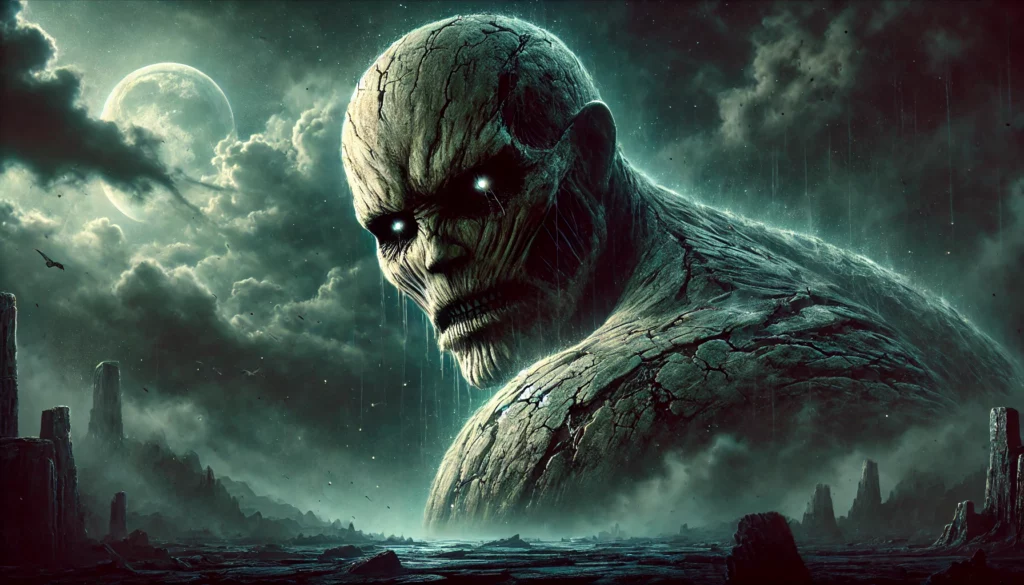The ancient Titans, primordial figures from Greek mythology, represent forces and entities beyond human understanding. These colossal beings, revered and feared, are associated with the raw power of the universe—a theme that H.P. Lovecraft would later adapt to build his own pantheon of unimaginable beings. While Lovecraft did not directly incorporate the Greek Titans into his work, the influence of their cosmic significance and terrifying scale is undeniable in his exploration of cosmic horror.
Lovecraft’s engagement with the Titans draws on themes from Greek mythology, interpreting these beings not simply as divine but as alien forces. This blog will explore the origins of the Titans, trace their mythological significance, and examine how Lovecraft drew on these concepts to create his own pantheon of cosmic horrors. References from both primary and secondary sources will support this analysis, offering a glimpse into how ancient myths evolved into modern cosmic horror.
1. Who Were the Titans?
In Greek mythology, the Titans were a race of powerful deities born from the primordial beings Uranus (the Sky) and Gaia (the Earth). This first generation of Titans, including Cronus, Rhea, and Oceanus, represented elemental forces of nature and cosmic order. They ruled during a golden age before being overthrown by their offspring, the Olympians, in a violent succession struggle known as the Titanomachy.
The Titans embody themes of chaos, raw power, and the cyclical nature of destruction and rebirth. According to historian Walter Burkert, the Titans were “figures of a remote past, older than any human memory.” They are, in essence, archaic embodiments of forces beyond mortal comprehension. These same ideas resonate with Lovecraft’s depiction of ancient, god-like beings who ruled in ages before human civilization and whose return would bring destruction and madness.
Sources:
- Burkert, Walter. Greek Religion: Archaic and Classical. Harvard University Press, 1985.
2. Lovecraft’s Cosmic Horror: An Introduction
Lovecraft’s horror centered on the theme of cosmic insignificance. Unlike traditional horror, Lovecraft introduced the idea that humans are inconsequential in a vast, indifferent universe populated by ancient beings. These entities are often indifferent to humanity and embody the terrifying vastness of time and space. Lovecraft’s mythos includes creatures like Cthulhu, Nyarlathotep, and Azathoth—god-like beings whose existence defies human comprehension.
Scholar Robert M. Price noted that “Lovecraft’s universe mirrors the terrifying grandeur of the ancient mythological world, wherein mortals are dwarfed by forces and beings they cannot comprehend.” Much like the Titans, Lovecraft’s deities are primordial, existing before human history and civilization. This notion of terrifyingly ancient, cosmic power is directly traceable to the Titans of Greek myth.
Sources:
- Price, Robert M. The Horror of It All: Encrusted Satires of Supernatural Fiction. Greenwood Publishing, 1982.
3. Parallels Between the Titans and Lovecraft’s Pantheon
Several parallels can be drawn between the Titans and Lovecraft’s pantheon, particularly in the themes of cosmic power, rebellion, and existential dread.
a. Cosmic Power and Scale
Both the Titans and Lovecraft’s Old Ones are beings of unimaginable power. Lovecraft described Cthulhu as a “godlike being of immense size,” similar to the descriptions of Cronus and Oceanus, whose scale reflects the vastness of the forces they represent. Like the Titans, Lovecraft’s beings are linked to natural phenomena and cosmic forces. For instance, Cthulhu is associated with the ocean—a force as mysterious and boundless as the Titans themselves.
- Reference Example: In At the Mountains of Madness, Lovecraft introduces the Elder Things, a race of beings that predate humanity and shaped the early Earth. The echoes of ancient Titans ruling over primordial landscapes are evident, underscoring Lovecraft’s fascination with cosmic antiquity.
b. Rebellion and Succession
The Titanomachy, the great war in which the Olympian gods overthrew the Titans, is echoed in Lovecraft’s stories of ancient conflicts and exiled gods. Lovecraft’s mythos often hints at power struggles between cosmic entities, with some beings exiled or imprisoned—echoing the punishment of the Titans in Tartarus. This theme of rebellion and imprisonment mirrors Lovecraft’s stories of beings confined in hidden places, waiting to return.
- Reference Example: In The Call of Cthulhu, Cthulhu is said to be trapped beneath the ocean in the lost city of R’lyeh, awaiting a time when the “stars are right” to rise again. This is strikingly similar to the imprisonment of the Titans, who are also fated to return one day.
c. Existential Dread and Indifference
Lovecraft’s works evoke the sense of dread that humans feel when faced with the unknown—a sentiment rooted in myths of the Titans. The Titans, in their pre-Olympian rule, symbolized forces that could not be reasoned with, similar to Lovecraft’s indifferent deities. The Titans’ existence before the Olympian gods parallels Lovecraft’s concept of beings that existed long before humanity and whose return would herald chaos and destruction.
- Reference Example: Azathoth, a deity in Lovecraft’s work, is often depicted as a blind, mindless force of chaos—an echo of the Titans’ portrayal as cosmic forces beyond morality or reason.
Sources:
- Lovecraft, H.P. At the Mountains of Madness. Arkham House, 1936.
- Joshi, S.T. H.P. Lovecraft: A Life. Necronomicon Press, 1996.
4. Influence of Classical Mythology on Lovecraft’s Mythos
Lovecraft’s fascination with ancient myths and folklore is evident in his works, where he draws on classical sources and reinvents them through the lens of cosmic horror. By integrating elements of Greek mythology, Lovecraft elevates his deities to a timeless scale, associating them with myths as old as civilization itself.
The Titans, as embodiments of primal forces, serve as prototypes for Lovecraft’s cosmic beings, who operate beyond human understanding and moral constraints. This is particularly evident in Lovecraft’s descriptions of his gods as “amoral,” a characteristic he likely borrowed from Greek interpretations of the Titans as beings beyond the conventional morality of human society.
5. Conclusion: Titans Reborn in the Age of Cosmic Horror
Lovecraft’s incorporation of Titan-like beings and themes into his cosmic horror mythos showcases his deep appreciation for ancient mythology. The Titans, with their associations of cosmic power, rebellion, and primordial chaos, offered Lovecraft a blueprint for his own pantheon of unknowable beings. By blending classical myth with science fiction, Lovecraft reinvented the Titans, transforming them from Greek myth into icons of cosmic dread that continue to influence horror and fantasy literature.
Suggested References:
- Burkert, Walter. Greek Religion: Archaic and Classical. Harvard University Press, 1985.
- Lovecraft, H.P. At the Mountains of Madness. Arkham House, 1936.
- Joshi, S.T. H.P. Lovecraft: A Life. Necronomicon Press, 1996.
- Price, Robert M. The Horror of It All: Encrusted Satires of Supernatural Fiction. Greenwood Publishing, 1982.


